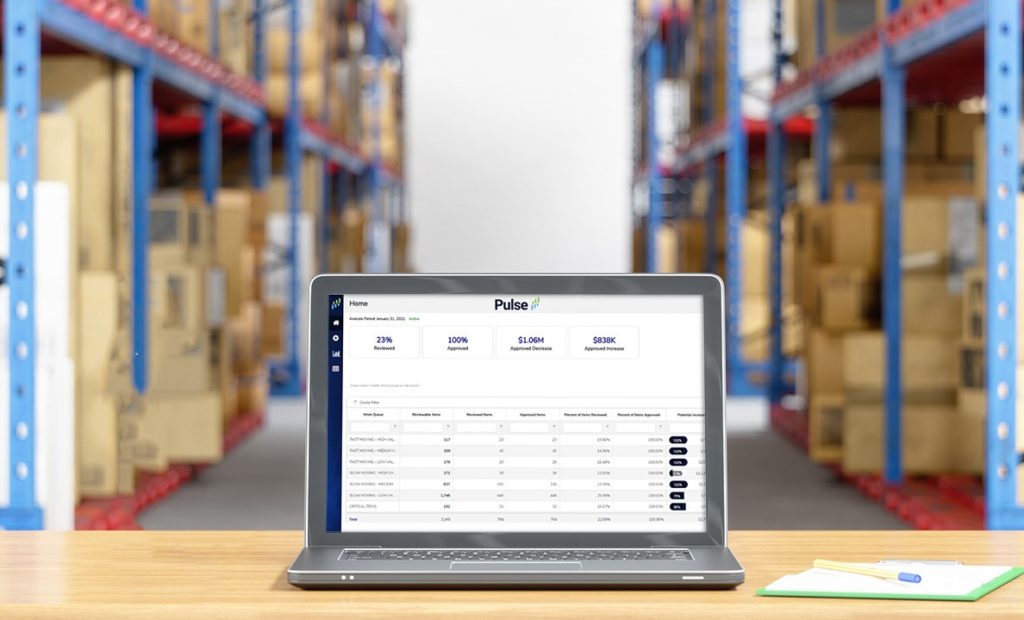As part of reliability and supply chain improvement, there’s huge potential to drive efficiencies and productivity gains with more proactive optimization of spare parts inventory.
In this post, we’ll look at the reasons to take action and results that can be achieved when you get the basics right.
Experience tells us that improving maintenance, repair and operations (MRO) inventory performance can generate tangible results in months. Within a year our clients have reduced working capital by millions and improved part availability with our Pulse software and structured inventory optimization reviews.
Outcomes Achieved By Our Clients
Investment
How did they do it? It’s about getting the basics right.
Improve Your Inventory Mix
MRO inventory optimization is focused on improving inventory mix, recognizing the reality of finite working capital, and the importance of spending every dollar well to ensure the right parts are at hand to support profitable production.
Avoiding costly production shutdowns requires that all necessary spare parts be properly identified and well-stocked in advance of any issues. On the other hand, having too many spare parts, or spare parts located in the wrong places, can also drive up costs.
The best way to ensure your spare parts inventory is ready for any eventuality is to have a proactive MRO inventory management strategy in place. When MRO processes are reactive, inventory can become a security blanket. It’s there to save you when things go wrong, and you start carrying a lot of parts inventory for unexpected, last-minute equipment repairs.
Our clients have been able to turn that around with reliable data and targeted inventory optimization. How? By creating an accurate, centralized inventory database, implementing Pulse optimization software to increase visibility into their inventory and automating stocking reviews.
Use Data to Quantify Decisions
Using prescriptive analytics and business rules to provide decision support for inventory management, Pulse delivers data-based insights and generates recommendations to continually optimize inventory. Once accepted, Pulse recommendations are updated in the ERP or EAM to improve the accuracy of replenishment planning processes.
With data and analytics driving the context for conversation, maintenance teams have greater confidence that stocking decisions are fact based, allowing them to focus on what matters most – asset care. Having that external third party say, ‘you don’t need it and it’s costing you this much’ can bring new focus and objectivity to replenishment processes. With the right data, you’re able to quantify that inventory security blanket and understand where it can be released.
Enhance MRO Performance
While our clients see major impact from actioning Pulse recommendations, they have also seen big productivity gains from enhancing MRO data and processes to achieve performance improvements.
With an MRO Health Check review of your transactional data and current practices you can identify and address specific challenges in your supply chain. The first step is understanding how your MRO supply chain is performing and the best ways to improve it – whether it’s enhancing your MRO Parts Catalogue data or conducting Direct Charge Analysis and Parts Criticality Assignment to ensure your inventory is meeting your business needs.
The result is better alignment between Maintenance and Supply Chain, tighter control and reduced effort.
Achieve Tangible Results
With small process improvements our clients have been able to achieve measurable results, reducing inventory while increasing parts availability, within their first year.
Having more visibility into their parts inventory and MRO performance has enabled them to decrease MRO costs, increase productivity and mitigate the impact of increasing supplier lead times.
Learn More
- Get started with an MRO Health Check to uncover your parts inventory optimization opportunities
- Book a demo to find out how Xtivity’s Pulse software can help you find the right asset inventory balance



